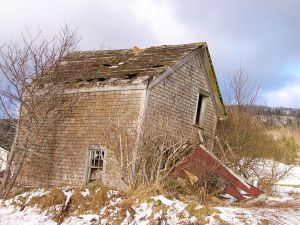 Collapse coverage for first-party property claims in New York is important because of the large building damages involved and the various policy exclusions that help determine whether the policy affords coverage for the claimed loss. As with any other complex problem, however, you should start with the basics: the definition of collapse.
Collapse coverage for first-party property claims in New York is important because of the large building damages involved and the various policy exclusions that help determine whether the policy affords coverage for the claimed loss. As with any other complex problem, however, you should start with the basics: the definition of collapse.
In our last article on the subject, we discussed what constitutes a collapse in New York. Some courts have concluded that a collapse occurs when the structural integrity of a building is substantially impaired. Royal Indem. Co. v. Grunberg, 155 A.D.2d 187, 553 N.Y.S.2d 527(3rd Dept. 1990). Others require that a collapse include an element of suddenness, a falling in, and total or near total destruction. See Graffeo v. U.S. Fid. & Guar. Co., 20 A.D.2d 643, 246 N.Y.S.2d 258 (2nd Dept. 1964), motion for leave to appeal denied, 14 N.Y.2d 685, 198 N.E.2d 911 (1964).
It’s also important to know the reasoning behind the rules in order to understand how they apply to any given claim. In this article we are going to discuss the reasoning behind the substantial impairment rule, set out in Royal Indem. Co. v. Grunberg, supra. A close examination of the facts of that case expose the reasons why the rule has been implemented in so many jurisdictions.
In Royal v Grunberg, supra, the insureds were homeowners who purchased land on which to build their house. It was a modular home, in which the pre-fabricated sections are transported to the site and, as they are placed on the foundation, joined together into a finished home. The land on which it was built was hilly and overlooked a ravine; it must have had a gorgeous view.
During the course of construction, however, the Insureds noticed serious problems. One wall of the house, which faced the east, or the downslope of the hill, as well as a deck, were seven inches out of plumb. Certain windows and doors wouldn’t open or close. A large number of cracks developed throughout the house, including a four inch deep crack that ran along the entire basement floor. The foundation wall on the east, or downslope, side of the house, bowed outward; and the house itself tilted in the same direction. The house, in other words, looked like it was leaning downhill. It did not, however, fall down or fall in; its walls still stood; and it was not reduced to rubble. It still was a house, not a pile of debris. The Insureds repaired the damage and made a claim to recover under their policy of homeowner’s insurance for the cost of the repairs. The carrier disclaimed coverage and commenced a declaratory judgement action seeking a declaration that the Insureds’ claim was not covered by the policy.
The main issue in the case was whether the house had collapsed, even though it had never fallen down.
Continue reading
 The last few articles have discussed the basic concepts and rules of subrogation in New York. It is the equitable doctrine that allows an insurer that pays a covered claim to its own insured to stand in the shoes of its insured to recover the money from the person or entity that caused the loss.
The last few articles have discussed the basic concepts and rules of subrogation in New York. It is the equitable doctrine that allows an insurer that pays a covered claim to its own insured to stand in the shoes of its insured to recover the money from the person or entity that caused the loss.  New York Business Lawyer Blog
New York Business Lawyer Blog


 The last two articles discussed the rules behind the equitable doctrine of
The last two articles discussed the rules behind the equitable doctrine of  In our last article, we discussed
In our last article, we discussed  There are many terms, related both to insurance and business, which seem too intimidating for most people even to want to try to understand. Subrogation is one such term. It sounds like an impressively dense legal concept that only can be understood through the use of skilled professionals pouring over thick stacks of documents trying to decipher obtuse language to discern some hidden meaning or obtain some pearl of wisdom. Well, so much for fantasy. It really is a straightforward legal concept that every New York business and insurance adjuster should become familiar with, because it can affect the business’ recovery after a property or casualty loss.
There are many terms, related both to insurance and business, which seem too intimidating for most people even to want to try to understand. Subrogation is one such term. It sounds like an impressively dense legal concept that only can be understood through the use of skilled professionals pouring over thick stacks of documents trying to decipher obtuse language to discern some hidden meaning or obtain some pearl of wisdom. Well, so much for fantasy. It really is a straightforward legal concept that every New York business and insurance adjuster should become familiar with, because it can affect the business’ recovery after a property or casualty loss.  Collapse coverage for first-party property claims in New York is important because of the large building damages involved and the various policy exclusions that help determine whether the policy affords coverage for the claimed loss. As with any other complex problem, however, you should start with the basics: the definition of collapse.
Collapse coverage for first-party property claims in New York is important because of the large building damages involved and the various policy exclusions that help determine whether the policy affords coverage for the claimed loss. As with any other complex problem, however, you should start with the basics: the definition of collapse.  Everyone might think they know what a collapse is. Everyone probably says they know a collapse when they see it. Most New York businesses and homeowners have policies of property insurance to protect them and their property from major, and sometimes minor, damage. But has anyone ever really taken the time to figure out whether a collapse is actually covered under their policy of property insurance? Even if the policy states that it provides additional coverage for collapse, whether or not the policyholder will be able to recover depends, in large part, on the definition of collapse.
Everyone might think they know what a collapse is. Everyone probably says they know a collapse when they see it. Most New York businesses and homeowners have policies of property insurance to protect them and their property from major, and sometimes minor, damage. But has anyone ever really taken the time to figure out whether a collapse is actually covered under their policy of property insurance? Even if the policy states that it provides additional coverage for collapse, whether or not the policyholder will be able to recover depends, in large part, on the definition of collapse.  We have been discussing how much a New York business can recover from someone who damages its property. If the property is damaged, but not destroyed, the business normally can recover either the loss in market value caused by the damage, or the cost of repairs, whichever is less. See
We have been discussing how much a New York business can recover from someone who damages its property. If the property is damaged, but not destroyed, the business normally can recover either the loss in market value caused by the damage, or the cost of repairs, whichever is less. See